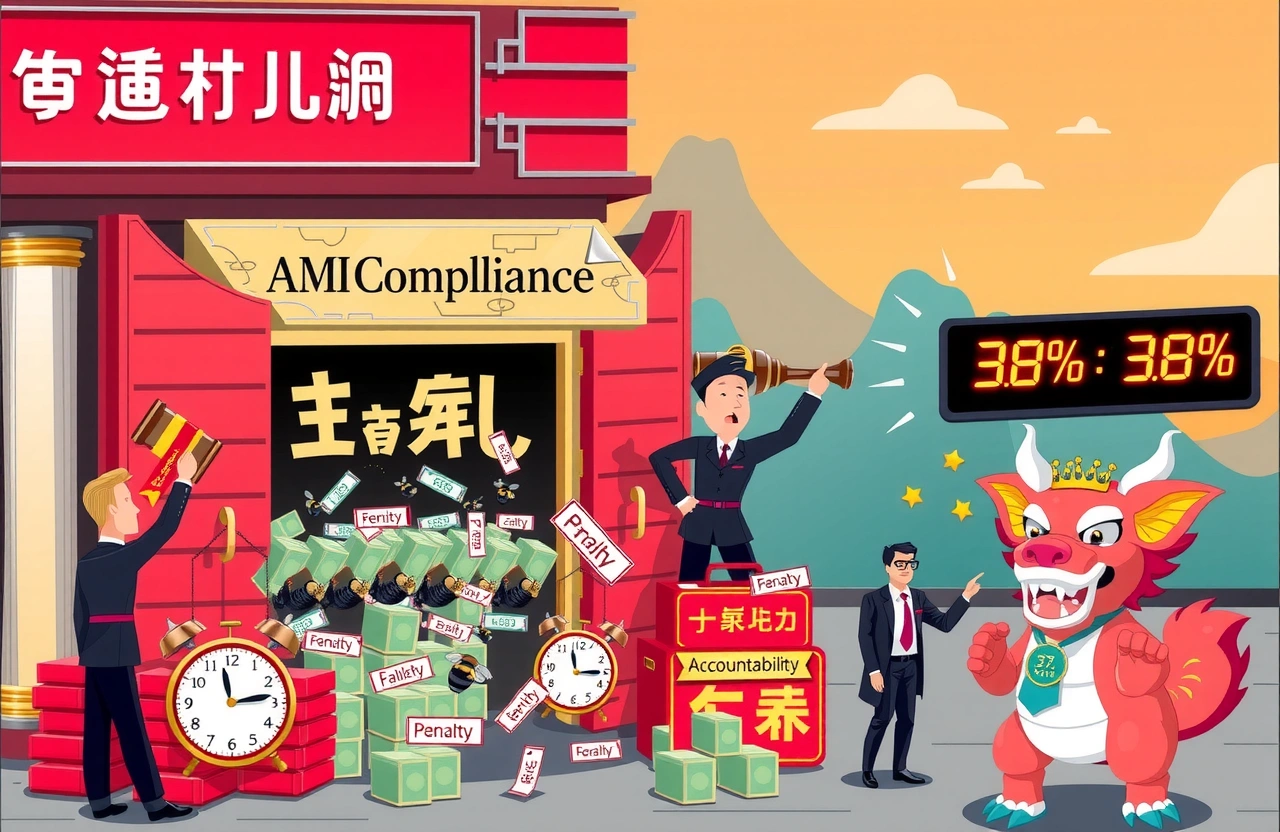Sichuan Rongxian Rural Commercial Bank’s recent 1.087 million yuan ($150,000) penalty demonstrates China’s escalating crackdown on anti-money laundering non-compliance. This enforcement action highlights critical vulnerabilities in financial institutions’ monitoring systems amid heightened regulatory scrutiny. As the People’s Bank of China intensifies nationwide AML oversight, this case reveals how customer verification gaps and transaction reporting failures expose banks to significant penalties—with personal accountability extending to executives.
Key findings from regulatory action:
– Multi-level violations uncovered across account management and data handling
– Critical failures in customer identity verification protocols
– Systemic gaps in suspicious transaction monitoring
– Executive directly penalized for compliance breaches
Detailed Breakdown of Regulatory Violations
The People’s Bank of China’s Sichuan division identified four distinct compliance failures warranting the seven-figure penalty:
Account Management Deficiencies
The institution violated fundamental account opening protocols and monitoring requirements, failing to properly screen account holders or detect irregular activity patterns. Such oversights create entry points for illicit fund flows and undermine essential security safeguards.
Credit Information Violations
Regulators documented improper data collection and handling of sensitive borrower information, breaching China’s Personal Information Protection Law. This included failures in client authorization protocols and unauthorized information sharing between departments.
Customer Identity Verification Failures
As core anti-money laundering infrastructure collapsed, the bank neglected basic customer due diligence required under AML Regulation Article 9. Critical risk assessments were bypassed during client onboarding, permitting high-risk accounts without enhanced scrutiny.
Suspicious Transaction Reporting Gaps
Monitoring systems failed to flag or report transactions exceeding regulatory thresholds, violating AML Regulation Article 11. The compliance department neglected to investigate at least 37 identified red flags involving unusual fund movement patterns.
Regulatory Framework: China’s AML Requirements
The violations directly contravene mandatory provisions established by the People’s Bank of China:
AML Regulation Article 9 Explained
Financial institutions must implement multi-layered customer identification systems including:
– Biometric verification for high-risk clients
– Ongoing relationship monitoring
– Source-of-fund validation for transactions exceeding 50,000 yuan
AML Regulation Article 11 Requirements
Mandatory reporting applies to:
– Single transactions exceeding 200,000 yuan
– Suspicious patterns indicating potential money laundering
– Cross-border transfers without clear commercial purpose
Personal Accountability Enforcement
The penalty extends beyond institutional sanctions to individual executives:
Executive Liability: Dai Mouying’s Case
Dai Mouying (代某莹), former Operations Management Director, received a personal fine of 55,000 yuan for overseeing flawed compliance processes during her tenure. This rare individual sanction demonstrates regulators’ focus on holding decision-makers directly responsible for systemic anti-money laundering failures.
Expanding Regulatory Precedent
Recent cases show similar sanctions:
| Institution | Penalty | Executive Liability |
|---|---|---|
| Chongqing Rural Commercial Bank | RMB 2.3M | Compliance Director fined RMB 70,000 |
| Zhejiang Merchant Bank | RMB 1.5M | Operations Head fined RMB 50,000 |
Macro Impact on Banking Sector
This penalty signals broader industry ramifications:
Provincial Banking Vulnerabilities
Rural financial institutions face particular compliance challenges:
– Limited technical resources for transaction monitoring
– Staff training gaps in AML fundamentals
– Resource constraints hampering effective oversight
Enforcement Trend Analysis
According to People’s Bank of China data:
– Rural bank penalties increased 43% year-over-year
– AML violations now constitute 38% of banking sanctions
– Regional financial institutions account for 67% of recent fines
Practical Compliance Pathway
Financial institutions can implement these anti-money laundering safeguards:
Transaction Monitoring Framework
Effective systems should include:
– Automated alert thresholds for unusual activity
– Behavior profiling algorithms
– Cross-referenced database screening
Customer Due Diligence Checklist
Standard procedures must cover:
– Biometric identity verification
– Business purpose documentation
– Risk-tiered review timelines
– Ongoing relationship monitoring
Industry Implications
This case reflects larger regulatory patterns:
AML Enforcement Trajectory
China’s Financial Action Task Force commitments drive:
– Increasing automated surveillance integration
– Higher penalties with personal accountability
– Expanded transaction monitoring requirements
Banking Sector Adaptation
Forward-looking institutions are:
– Budgeting 22% more for compliance technology
– Hiring specialized AML officers
– Implementing blockchain transaction tracking
These regulatory actions underscore non-negotiable anti-money laundering commitments. Financial institutions must integrate automated monitoring systems, deliver comprehensive staff training, and establish executive accountability frameworks through robust compliance governance. Immediate evaluation of AML protocols represents a strategic imperative—deferring compliance investments risks escalating penalties that impact both institutional finances and leadership careers.



